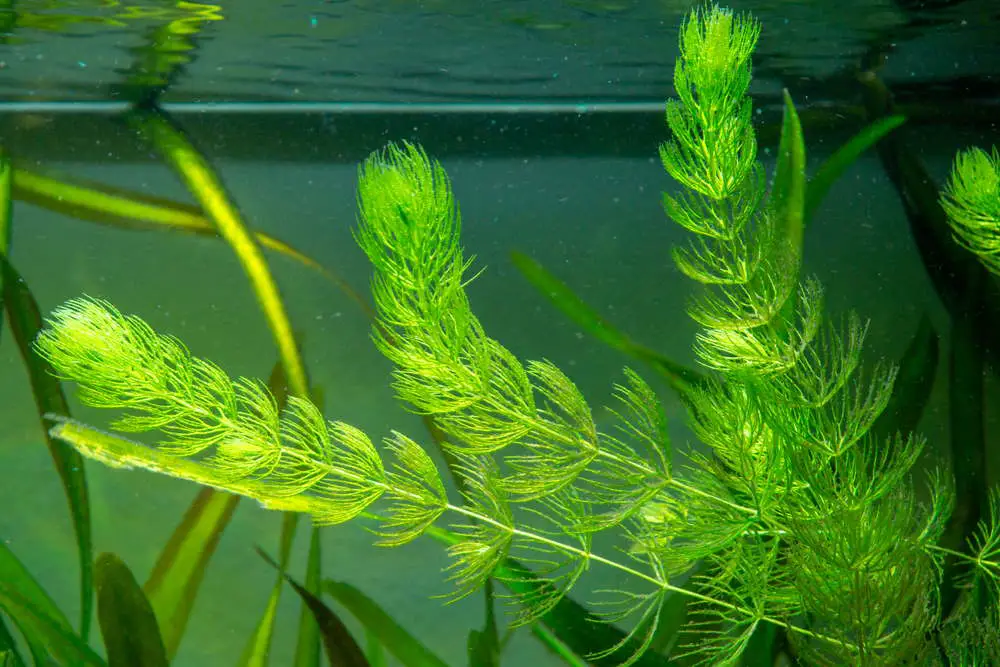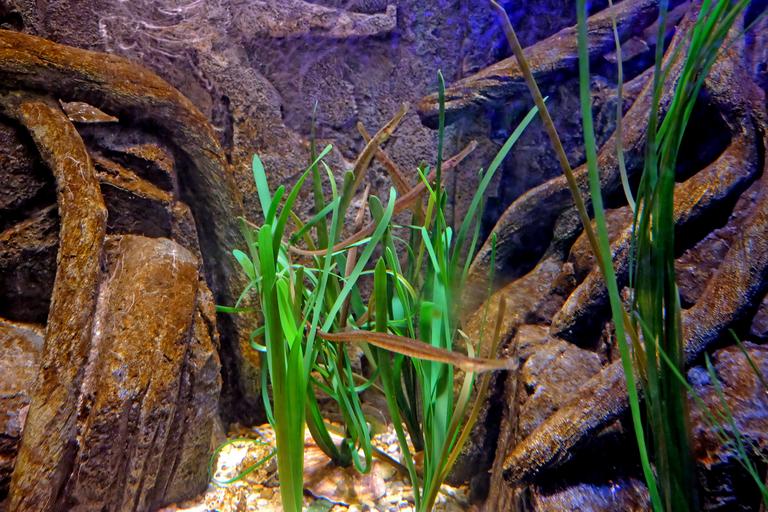Fishkeeping can be a tricky business, especially when you have to manage so many aspects of a tank―filtration, aeration, water parameters, light levels― that it can feel like a headache when issues arise.
One common issue people have with hornwort plants is discoloration that leads to the plant wilting and dying. So just what exactly causes hornwort to turn brown?
Hornwort, like many other plants in an aquarium setting, can wilt and turn brown due to lighting conditions, waste buildup, or a lack of fertilizer.
There are a lot of factors that may influence why your hornwort keeps dying, but thankfully, there are a lot of steps you can take to recover your hornwort and keep it vibrant green in your aquarium.
The rest of this article will walk you through figuring out what’s wrong with your hornwort and how to fix it.
Recommended:
What Does Hornwort Need to Live?
Hornwort is one of the most popular beginner plants due to how easy it is to care for, but that doesn’t mean that it won’t suffer with poor water conditions or light levels.
You can put hornwort in any size tank, and it can thrive in pH levels anywhere from 6-7.5. In addition, it’s particularly hardy when it comes to withstanding varying temperatures between 59 degrees Fahrenheit and 86 degrees Fahrenheit.
The water hardness should not fall below 5 dGH and should not exceed 15 dGH.
How Do You Keep Hornwort Green?
When introducing your hornwort to a new tank, you will need to give it time to adjust to the new tank environment.
During this period, you may see some leaves turning yellow or brown, but you shouldn’t worry about the ‘new tank’ shock too much unless the issue persists.
Beyond the initial phase, the three most important factors in keeping hornwort, or any plant really, a vibrant green are fertilizer, light levels, and substrate type.
Fertilizers are a crucial part of any healthy plant’s growth, and you should definitely by topping up your tank every now and again to make sure your hornwort is getting the nutrient it needs, although be cautious of overfertilizing the tank, as this can be detrimental to the tank.
Colder tanks should be given less fertilizer, while warmer tanks should be given more.
Light is another important factor in keeping your plants nice and healthy. Of course, with little to no sun access, aquarium plants get their energy from artificial tank lights to promote photosynthesis.
You need to make sure that you have a suitable aquarium light with the right amount of wattage for the size tank you have.
Plants need a red and blue spectrum of light, so you should use fluorescent or LED lights over your tank during the daytime to make sure the plants are capable of absorbing the necessary energy for photosynthesis.
Substrate is another extremely important component of a healthy plant if you’re planning on rooting any plants. These include gravel, sand, and soil.
Of these, a good aquasoil is the best bet to give your plants a good shot at growing. The reason is that aquasoil contains lots of essential nutrients.
As it turns out, substrate is of lesser important when it comes to hornwort, since it generally functions best as a floating plant at the top.
Does Hornwort Need a Lot of Light?
Hornwort can survive in both high and low light conditions, making them pretty hardy overall. Of course, that doesn’t mean that you should ignore the benefits of a light for your aquarium.
Not only will a light help your plants stay healthy, but they also allow you to see all of the beautiful fish and plants in your aquarium better. Hornwort do well floating at the top where they can absorb the most light and carbon dioxide.
Why Is My Hornwort Turning Yellow?
Hornwort usually turns yellow in response to different light environments. If your light level is too high, then your plant might turn yellow as a result.
In some cases, a yellowish coloring throughout the plant can indicate a low-nutrient environment. Adding some fertilizers can help put nutrients back in the tank and help.
Slight browning shouldn’t be a concern as long as it isn’t too widespread. In fact, a little browning on the tips of your hornwort can indicate that your plants are getting the right amount of light that they need.
Why Does My Hornwort Keep Dying?
Hornwort is a hardy plant, but there are several reasons that it may be dying off in your tank. The first and most common are due to water parameters. A buildup of waste from fish in the tank can be harmful to hornwort and cause it to wilt.
Similarly, a tank that isn’t regularly cleaned and water changed can foster conditions that are harmful to hornworts, and all plants for that matter.
Doing regular water changes, making sure that you have the appropriate filtration, and applying fertilization treatments occasionally can go a long way towards improving the condition of your plants and your tank in general.
Final Thoughts
Hornwort can be a difficult plant to care for if you’re a bigger to the aquarium scene, but rest assured that there’s usually a road to recovery for your plants.
Hornworts can turn brown for various reasons, but if you see slight browning on the edges of your hornwort, or if you just introduced it to a new tank, don’t panic!
This behavior is normal and not concerning; however, if your hornwort is going brown or yellow all over, then you should consider making sure the light levels are suitable for the plant.
Oftentimes, hornwort takes on that beautiful vibrant green color in lower light environments.
In addition, hornwort needs nutrients to thrive, so make sure you’re staying on top of your fertilizing routine for best results.
Lastly, you need to monitor your tank’s water parameters and make sure there isn’t a buildup of debris on the tank floor. In all, taking good care of your tank is the best way to keep your hornwort happy and healthy.




